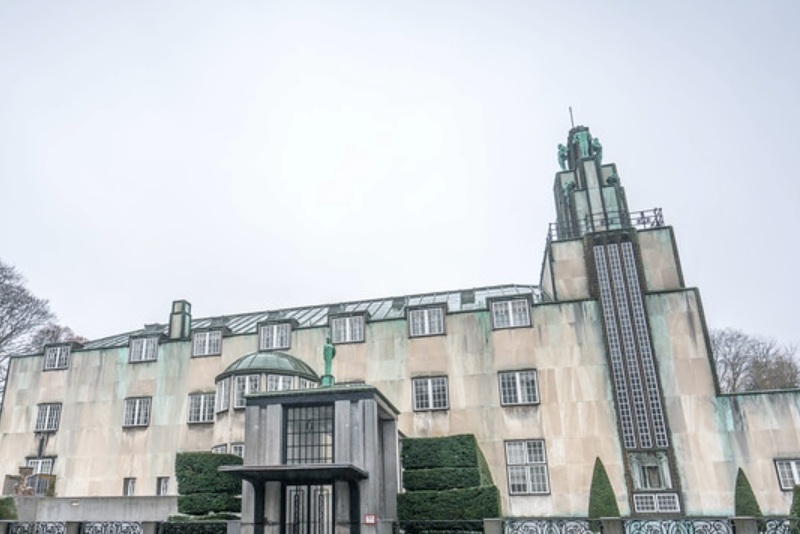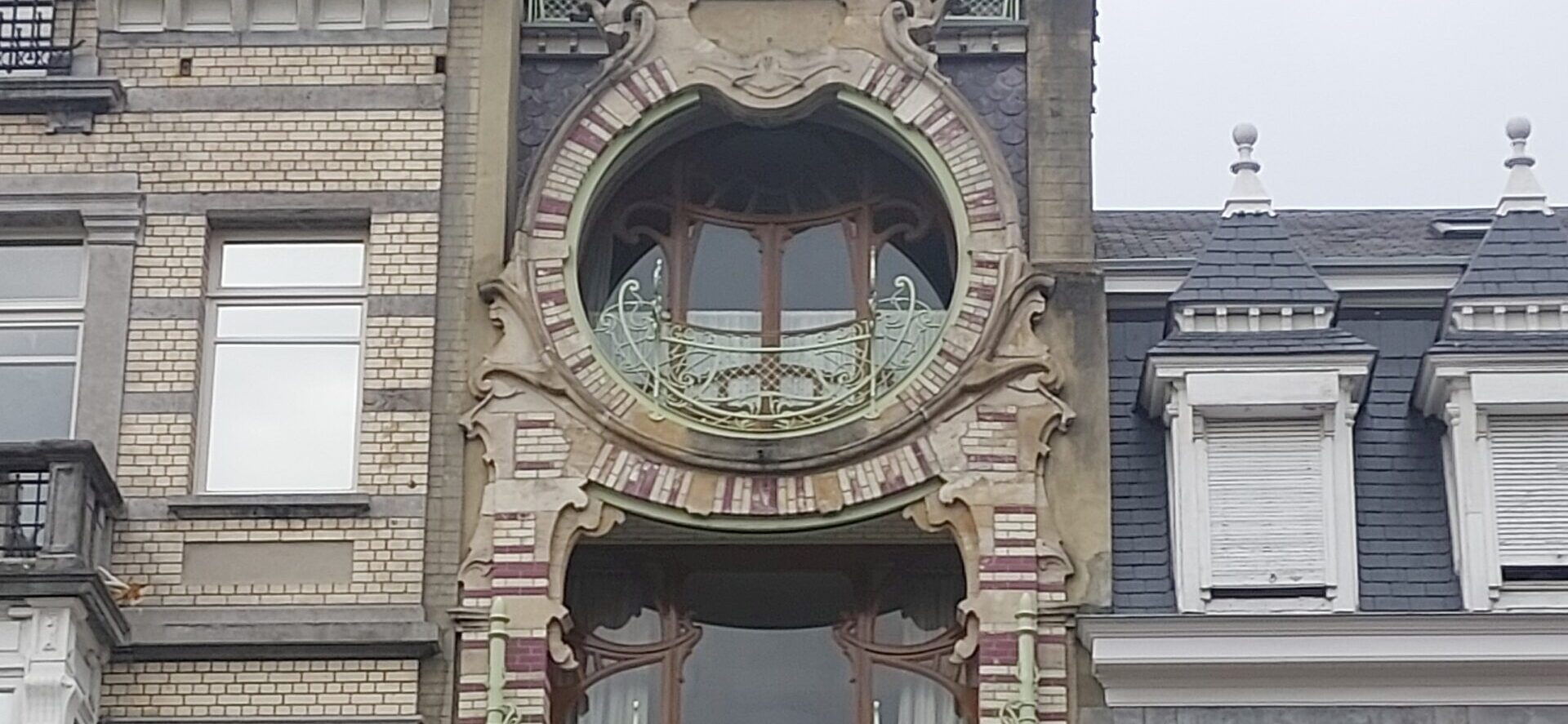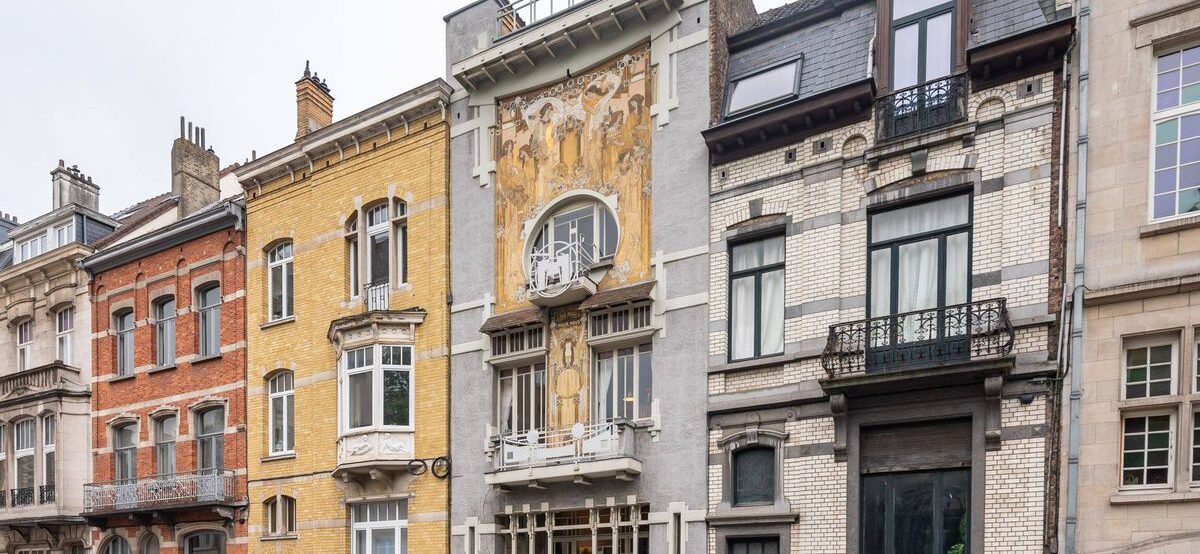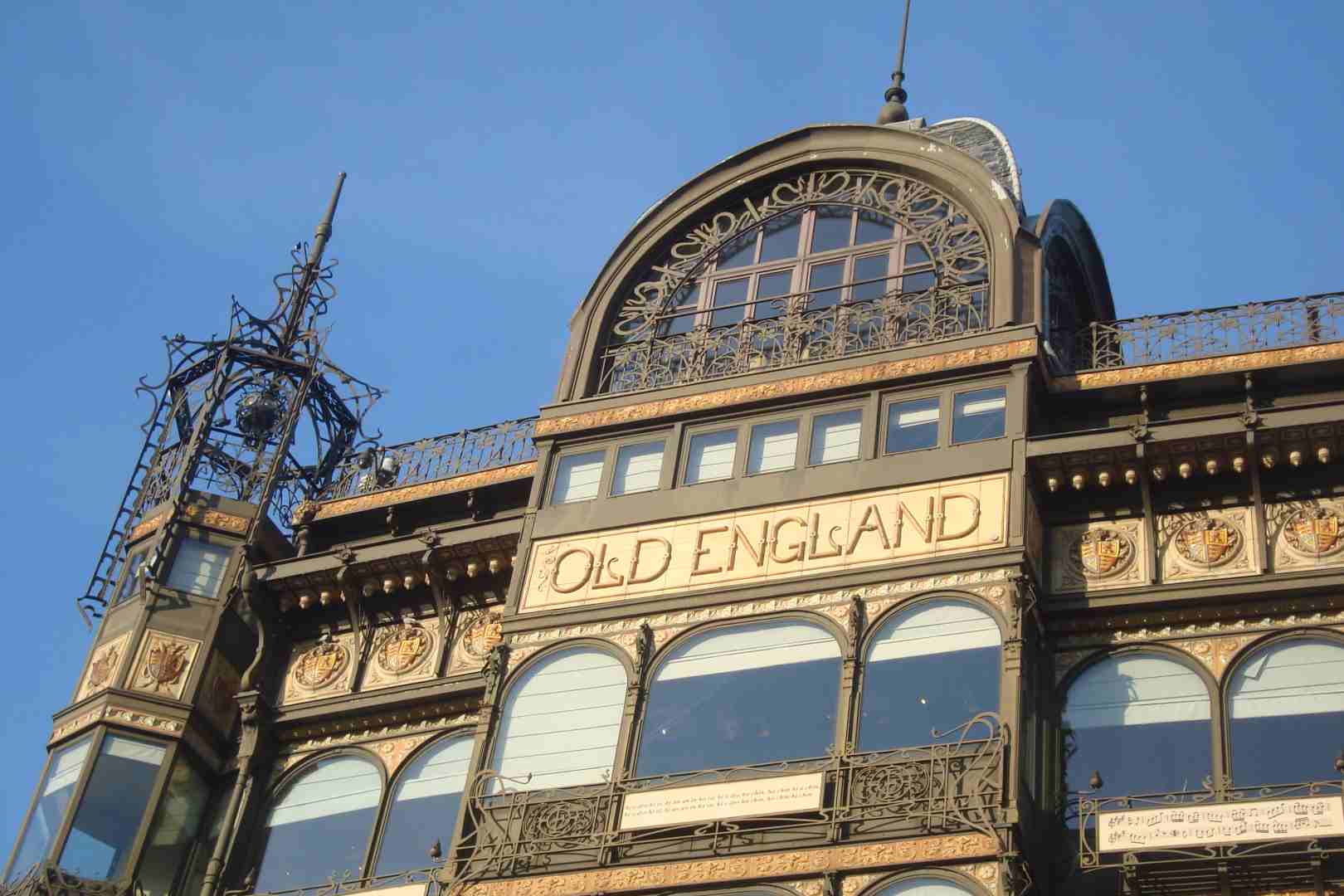As you pedal along the grand Avenue de Tervuren in Brussels, the striking silhouette of the Palais Stoclet is impossible to overlook. This impressive modernist mansion, clad in gleaming white marble, boasts a sleek tower that is crowned with four nude statues. It stands out as a monument to both artistic innovation and personal devotion, representing one of the most exquisite examples of early 20th-century architecture in Belgium.
The palace was built between 1905 and 1911 by renowned Viennese architect Josef Hoffmann, commissioned by the wealthy Belgian banker Adolphe Stoclet. Stoclet envisioned the building not only as a luxurious residence but as a temple to art, a physical manifestation of his love for both beauty and his wife, Suzanne. Some even refer to it as Belgium’s answer to the Taj Mahal, given its blend of personal and artistic significance.
What sets Palais Stoclet apart from other grand homes of the period is the extraordinary level of artistic collaboration that went into its creation. Hoffmann assembled a team of some of the most talented artists and craftsmen of the era to design every minute detail of the mansion. No element was overlooked—everything from the artworks to the light fittings, door handles, cutlery, and even the silver toilet fixtures was custom-made. Each piece contributed to the cohesive aesthetic of the Gesamtkunstwerk, or “total work of art”, which Hoffmann and his collaborators sought to achieve. This holistic design philosophy made Palais Stoclet a masterpiece of the Vienna Secession movement.
The Stoclets, as lovers of the avant-garde, opened their doors to some of the leading artists, designers, and cultural figures of the time. Among their distinguished guests were French poet and filmmaker Jean Cocteau, Russian ballet impresario Serge Diaghilev, and French architect Robert Mallet-Stevens. The house became a gathering place for forward-thinking minds, further cementing its status as an icon of early modernism.
Yet, despite its fame and UNESCO World Heritage status, Palais Stoclet remains an elusive treasure. While many architectural masterpieces around the world are open to the public, the palace is still privately owned by the descendants of Adolphe Stoclet, who have long refused to allow visitors inside. Access to this dream-like palace is therefore limited to archival photographs taken in the early 20th century, with no contemporary images available to offer a glimpse of the interiors.
Over the years, efforts have been made by the Brussels Region to negotiate access with the Stoclet family, encouraging them to open the palace to the public, even on a limited basis. However, these attempts have consistently met with refusal. The owners are determined to preserve their privacy and keep the mansion closed off from curious visitors, leaving many to only imagine the beauty that lies within.
In an effort to bridge this gap, the Brussels Region recently created a detailed virtual 3D reconstruction of the palace’s interior, as it would have appeared in 1911. This meticulous digital model was developed using archived photographs and architectural plans, offering an immersive view of the mansion’s original state. While it may not be the same as stepping inside, this reconstruction provides an extraordinary opportunity to experience the splendor of Palais Stoclet in its heyday.
The virtual tour is available to the public in the Van Eetvelde Mansion, another stunning example of Art Nouveau architecture in Brussels. Open on weekends (Saturday, Sunday, and Monday), visitors can watch the video in a designated room, gaining insight into the artistry and innovation that define Palais Stoclet. This digital experience is a rare opportunity to explore a building that remains one of Brussels’ most intriguing and mysterious landmarks, hidden from view yet rich with history.

Despite the continued inaccessibility of the real thing, Palais Stoclet endures as a symbol of early 20th-century artistic ambition—a private monument that remains, for now, firmly locked away from the public eye.
The Stoclet House is a cultural UNESCO World Heritage Site. It is a private mansion that was inscribed into the UNESCO list in 2009. This private residence is a work of Architect Josef Hoffman and Wiener Werkstatte. It was built from 1905 to 1911.
The Stoclet House is located in the city of Brussels in Belgium. It is considered one of Hoffman’s masterpieces due to the luxurious and refined design of the house. It is considered as one of the grandest designs of the 20th century in Belgium.
Stay updated on all things Brussels—from tours to news—by visiting the Art Nouveau Club Brussels page.
Exploring Art Nouveau in Brussels: Unveiling Belgium’s Colonial Legacy investigates the intertwined history of Art Nouveau and colonialism in Belgium. To see these stories come alive, our Congo and Art Nouveau in Brussels private tour leads you through significant locations, where you’ll discover the unique role colonial influences played in shaping Brussels’ Art Nouveau landscape.





